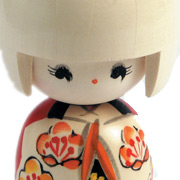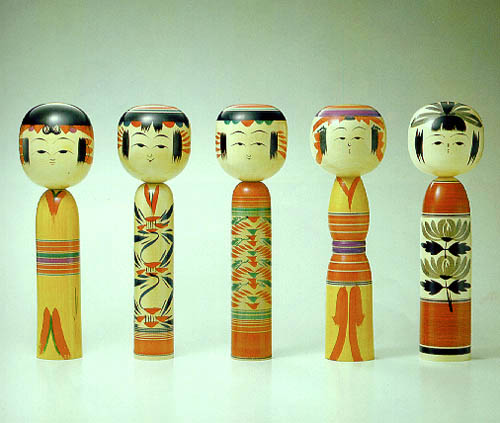Little is known about the early history of the Kokeshi Japanese Wooden Dolls. One school of thought believes that Kokeshi babies have their origins in spiritualist practice of religion. Wooden dolls were thought to contain the spiritual essence of the dead and were often made for honorary commemoration.
The modern history of Japanese Kokeshi dolls began in the last part of the Edo Period (1603-1867). Originating in the Tohiku region in northern Japan, renowned for its hot springs and invigorating hot spring waters, Kokeshi Dolls have become an important source of extra income for local craftsmen known as Kijiya (meaning woodworker in Japanese) who specialize in woodworking. Production of household items such as trays and wooden bowls. During the severe winters, these Kijiya masters started making “Kokeshi Dolls” to sell as souvenirs to visitors to local hot springs. Babies served not only as souvenirs but also as a massager that bathers use to gently tap their shoulders while enjoying the warming benefits of the hot springs
Kokeshi dolls were very simple in design, originally made on hand-operated lathes. Traditional Kokeshi dolls had common features consisting of a basic cylindrical limbless body and a rounded head. Although the first dolls were not painted, most Kokeshi today are painted with bright floral patterns, kimonos, and other traditional patterns. The colors used are red, yellow and purple. No two faces are alike, as all dolls are hand painted. This is perhaps Kokeshi’s biggest attraction. Some babies are whimsical, happy, and smiling, while others are serious.
Their popularity soon spread to Japan, and porchelin dolls were preferred as wooden toys for those who could not afford them. Additionally, the babies’ simple round shapes lent themselves as early teething rings for toddlers.
Kokeshi dolls traditionally represented young girls and soon became popular for depictions of feminine beauty. In addition, their simple charm and connection with childhood meant that they were often given as a gift when a child was born, as a birthday present, or as a symbol of remembering when a child died. Also, Kokeshi Japanese Wooden Dolls were popular with farmers’ children as it was widely thought that if children play with dolls they will promise a good harvest which is believed to have a positive effect on the gods.
The forests used for kokeshi are varied. Cherry is distinguished by its darkness. Mizuko or cranberry is softer and used extensively. Japanese maple Itaya-kaede is also used. Wood is left outdoors for one to five years before being used to make dolls. Today, Kokeshi is considered one of Japan’s traditional folk arts.

Despite their common features, there are two design schools, Traditonal Kokeshi and Creative Kokeshi.
Traditional Kokeshi is still produced for the main part only in the six provinces of the Tohoku region. All twelve design schools here exhibit distinctive features that allow experts to tell exactly where and usually by whom they were produced.
Creative Kokeshi does not follow the traditional designs from the Tohoku region and instead has an unstructured inspiration that is completely free in terms of shape and painting, the only traditional constraint is that it is manufactured with a lathe. Unlike traditional kokeshis, they do not show any of their distinctive local colors or techniques passed down from generation to generation. They represent one generation, original artwork from a single craftsman. This is a relatively new concept in which most artists try to express certain themes through their work.
Traditional and Creative crafted dolls have become a cause of celebration in Tohoku and Japan. Every year, in early September, people gather at the Naruko Onsen at a competition where craftsmen from all over the country gather to honor Kokeshi, and the number one prize is the prize of the Prime Minister.
There are many different styles of Kokeshi, but there is a philosophy that all Kokeshi dolls share, and that is the pursuit of beauty and art through simplicity.
